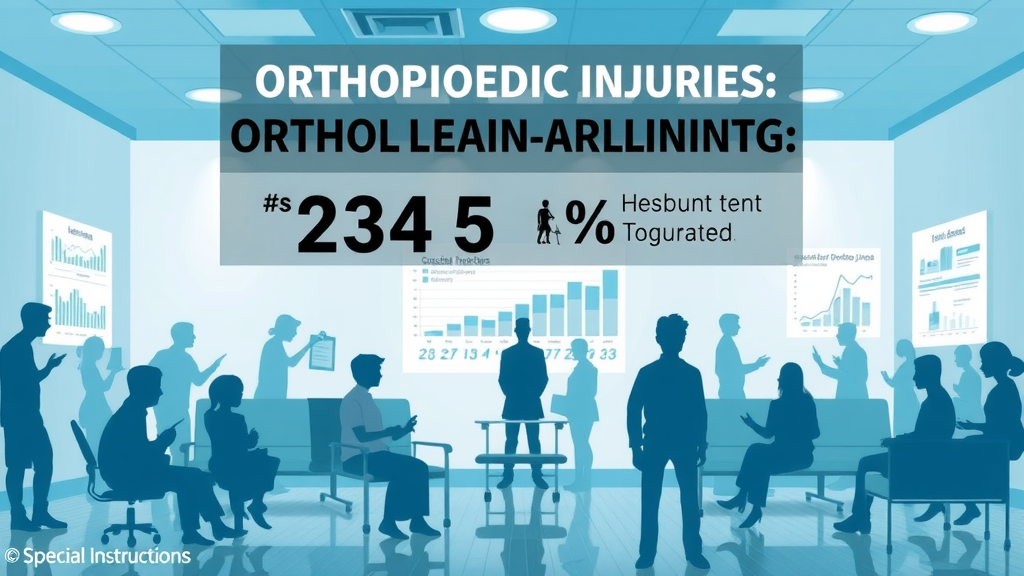Did you know that millions of people worldwide face orthopedic injuries each year, making the decision between conservative care and surgery a critical crossroad? Navigating the choice between these two treatment paths can be daunting and requires a clear understanding of the risks, benefits, and timing involved. This article sheds light on the nuances of conservative vs surgical orthopedic treatment , empowering patients to make informed decisions with expert guidance from Dr. Timothy Larson of Denton Hand & Orthopedics.

Opening with a Startling Fact: The Prevalence of Orthopedic Injuries and Treatment Choices
Orthopedic injuries represent a significant health burden, with a startling number of cases ranging from minor sprains to severe fractures. Patients frequently face the complex decision of whether to pursue conservative vs surgical orthopedic treatment . The choice profoundly impacts recovery times, complications, and overall outcomes. Understanding the fundamental differences between these approaches is essential, especially since many patients are unaware of the spectrum of options available to them.
Overview of Conservative vs Surgical Orthopedic Treatment
Dr. Timothy Larson of Denton Hand & Orthopedics explains, " Conservative treatments focus on non-invasive methods such as physical therapy and bracing, aiming to restore function without surgery whenever possible. " Conservative treatment emphasizes safety and gradual rehabilitation, avoiding the risks associated with surgery. Conversely, surgical treatment targets definitive repair using a range of operative techniques when conservative approaches have failed or are not indicated.
With advanced imaging technologies such as in-office X-rays and ultrasounds, specialists can rapidly evaluate injuries to tailor the best course of action. Conservative methods also include medication and supportive devices, while surgical options range from minimally invasive procedures to extensive reconstructive surgeries.
Key Components of Conservative Treatment
- Physical therapy and hand therapy to restore mobility and strength through guided exercises.
- Use of braces, casts, and orthopedic devices to immobilize and support healing structures effectively.
- In-office imaging like X-rays and ultrasound for immediate injury assessment.
- Medication and rest protocols to manage pain and inflammation conservatively.

Common Surgical Treatments in Orthopedic Surgery
- Minimally invasive procedures performed at surgery centers using arthroscopic technology.
- Repair of fractures and ligament reconstruction to restore joint stability and bone integrity.
- Arthroscopic surgeries that reduce tissue damage and accelerate recovery.
- Joint replacement surgeries for advanced joint deterioration or trauma.

Pros and Cons of Conservative Treatments
According to Dr. Timothy Larson, "Conservative treatment is often the first line of defense, especially for acute injuries, because it minimizes patient risk and preserves natural anatomy." The main advantages of conservative treatment include being low risk and cost-effective , with no incision-related complications. This approach acknowledges the body's natural healing capacities, aiming for gradual recovery without invasive procedures.
However, conservative treatments may require a longer recovery duration and sometimes result in incomplete healing, necessitating later surgical intervention. Patients must be aware that while conservative methods reduce immediate risks, there can be trade-offs in terms of treatment timelines and outcomes depending on injury severity.
Pros and Cons of Surgical Treatments
When Is Orthopedic Surgery Recommended?
Orthopedic surgery is generally recommended when conservative treatment fails or when the injury severity threatens long-term function and quality of life. Severe fractures, complex ligament tears, joint dislocations, or degenerative joint disease often necessitate surgical intervention to restore anatomy and ensure faster functional recovery.
Dr. Larson emphasizes, " We offer surgical solutions for patients requiring definitive repair—especially when rapid restoration of function is essential. Surgery carries higher risks and longer recovery but can provide lasting results when absolutely necessary. " Balancing timing and patient readiness is critical to optimize surgical outcomes.

Expert Insights: Balancing Conservative vs Surgical Orthopedic Treatment
Dr. Timothy Larson of Denton Hand & Orthopedics states, " Our approach prioritizes compassionate, individualized care, attempting conservative treatment whenever possible, but we are prepared to act swiftly with surgical options when necessary. " This philosophy reflects a tailored treatment plan centered on patient needs, injury type, and recovery goals.
Integrating advanced diagnostics and in-office therapeutic services allows for quick adjustments in care pathways, minimizing delays. The dual expertise in non-invasive and surgical orthopedics enables practitioners to provide comprehensive solutions aligned with patient preferences and clinical indications.
Common Misconceptions About Conservative and Surgical Treatments
Many patients harbor misconceptions about their orthopedic care options. Addressing these myths is critical for informed decision-making:
- Surgery is always the best option: Not always true, as many injuries improve with conservative care.
- Conservative treatment means no improvement: On the contrary, many cases see excellent recovery without surgery.
- Surgical treatments are too risky for most patients: Modern techniques have reduced risks substantially.
- Conservative treatments are only for minor injuries: Conservative care can be effective even for moderate injuries.

Actionable Tips for Patients Considering Conservative vs Surgical Orthopedic Treatment
- Seek early evaluation with imaging and expert consultation to accurately diagnose the injury.
- Understand insurance coverage for in-office procedures, which may lower out-of-pocket costs.
- Consider physical therapy as a primary step, especially for mild to moderate injuries.
- Ask about minimally invasive surgical options if surgery becomes necessary, to reduce recovery time.
Comparison Table: Conservative vs Surgical Orthopedic Treatment
| Treatment Type | Advantages | Disadvantages | Typical Use Cases |
|---|---|---|---|
| Conservative Treatment | Lower risk, cost-effective, non-invasive | Slower recovery, may require surgery later | Mild to moderate injuries, initial treatment |
| Surgical Treatment | Definitive repair, faster function restoration | Higher risk, cost, longer recovery | Severe injuries, failed conservative care |

People Also Ask (FAQs) About Conservative vs Surgical Orthopedic Treatment
What is the difference between conservative and surgical treatment?
Conservative treatmentSurgical treatment involves operative procedures to repair or reconstruct damaged bones, joints, or ligaments, often used when conservative care is insufficient or injury severity demands it.
What is the difference between surgical and conservative fracture management?
Surgical fracture management stabilizes fractures through internal fixation devices like plates, screws, and rods to promote precise healing, especially in complex breaks. Conservative fracture management relies on immobilization via casts or braces and allows natural healing without surgery, typically reserved for stable fractures.
What are the two types of orthopedic surgery?
The two primary types include minimally invasive surgery using arthroscopic techniques to reduce trauma and open surgery , which involves larger incisions to access and repair bones or joints directly.
What is conservative management in ortho?
Conservative management involves treating orthopedic conditions using non-surgical options like physical therapy, bracing, rest, medication, and rehabilitation to manage symptoms and promote healing without incisions.
Key Takeaways
- Conservative vs surgical orthopedic treatment decisions depend on injury severity and patient needs.
- Conservative treatments prioritize safety and gradual recovery.
- Surgical treatments offer definitive solutions but carry higher risks.
- Expert care involves personalized treatment plans balancing both approaches.
Conclusion: Making Informed Decisions About Orthopedic Care
Choosing between conservative vs surgical orthopedic treatment is a nuanced decision that must consider individual injury specifics, patient preferences, and expert clinical judgment. Early evaluation with imaging and a trusted specialist can guide patients toward a personalized pathway that maximizes recovery and quality of life. As Dr. Timothy Larson of Denton Hand & Orthopedics aptly notes, compassionate and individualized care—leveraging both conservative and surgical options—is the cornerstone of effective orthopedic treatment. Patients should engage proactively with their healthcare providers to understand the full spectrum of choices and embrace the approach best aligned with their health goals.
When considering the best approach to orthopedic care, it’s essential to understand the differences between conservative and surgical treatments. The article “Orthopedic Treatments: Conservative vs. Surgical” from the Orthopedic Specialty Institute provides a comprehensive overview of both methods, detailing their benefits, drawbacks, and appropriate use cases. Additionally, the Cochrane review titled “Surgical versus conservative interventions for treating broken collarbones in adolescents and adults” offers an in-depth analysis of treatment outcomes, highlighting that low-quality evidence indicates surgery may not result in significant benefits over conservative treatment. If you’re serious about making an informed decision regarding your orthopedic care, these resources will provide valuable insights into the advantages and limitations of each treatment option.
 Add Row
Add Row  Add
Add 




Write A Comment